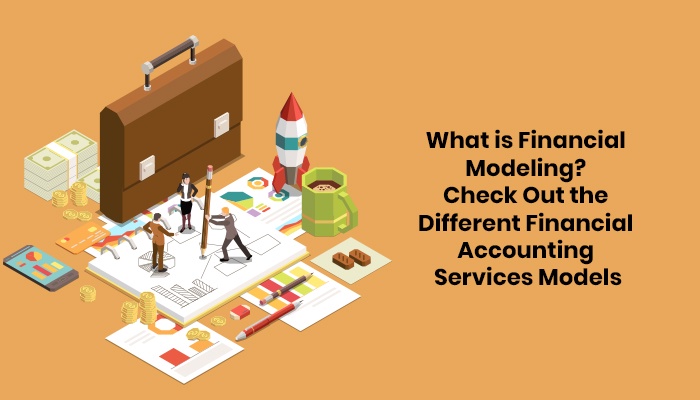What is financial modeling?
Financial modeling is the process that is used by experts to create a comprehensive summary of the company's earnings and expenditures. This is primarily used to assess the future impacts of certain decisions and events on the company.
There are a number of uses for financial models for company executives. Financial analysts use this information to analyze and predict the performance of the company stock based on any executive decision or possible future events.
Basic overview of financial modeling
Usage
Financial models are used for a variety of purposes by company executives and financial analysts. The primary reasons why companies use financial models are given below.
- Raise capital
- Divest or sell business units
- Capital allocation
- Business valuation
- Organic growth of a business
- Budget and forecast
Information used in a financial model
All financial models have some elements which are common.
- Balance sheet
- Income statement
- Sensitivity analysis
- Charts and graphs
- Supporting schedules
- Cash flow statement
- Assumptions and drivers
- valuations
Validation
Any error in a financial model will invariably lead to expensive mistakes. This is why all financial models are usually validated by an external party to cross-check the calculations and numbers. Banks and other financial institutions request financial models so that they could properly reassure end-users regarding the validity of the numbers and calculations in the model.
Types of financial accounting services models
There are a number of financial models that are used by businesses and corporations across the globe. We are going to take a look at the top 10 most common financial accounting services models.
1. Three-statement model
This is the most common type of financial model. The income sheet, cash flow, and balance sheet are linked together via formulas in Excel. The use of these three statements lends the name three-statement to this model. A solid foundation of Excel skills is required in addition to the finance and accounting skills to create this financial model.
2. Merger model (M&A)
Commonly used in corporate development and investment banking, this model aids in the evaluation of the pro forma dilution/accretion in case of a merger or acquisition. The impact of a merger or an acquisition can be effectively calculated with the help of this financial model.
3. Leveraged buyout model (LBO)
This is an advanced form of financial modeling that is almost exclusively used while modeling debt situations that are complicated. The businesses that primarily use this type of financial model are investment banking and private equity firms. The equity returns of a business are enhanced by this type of financial model by relying heavily on the company’s capital structure.
4. Direct cash flow model (DCF)
This financial model is based on the three-statement model. It is used for valuation purposes of a company based on the NPV (Net Present Value) of its future cash flows. It uses the XNPV function of Excel to discount the cash flows back to the present day based on the company’s WACC (Weighted Average Cost of Capital).
5. Initial Public Offering Model (IPO)
This type of financial model is primarily used by businesses and corporations to assess the valuation of their company before going public. Comparable company analysis is done in conjunction with assumptions regarding the amount of investment available from investors based on the company worth in this model. One feature of this model is an ‘IPO discount’ that is given to ensure that the company stocks do well in the secondary stock market.
6. Budget model
As is evident from the name of this model, financial planning and analysis professionals use this model to put together the budget for a business or a corporation. This type of financial model is usually heavily reliant on the income statement and is usually done monthly or quarter-yearly.
7. Option pricing model
There are two variants of this financial model - Black-Scholes and binomial tree. This financial model relies heavily on mathematical formulae instead of subjective components. So it is basically straightforward calculator functions built into Excel.
8. Sum of the parts model
This type of financial model is an amalgamation of several DCF models taken together. Business components that cannot be included in DCF models are included here and the sum of the parts (Value of both businesses, investments, and liability reductions) is used to determine the Net Asset Value (NAV) of the company.
9. Forecasting model
This type of financial model is predominantly used in FP&A (Financial Planning & Analysis). It helps build a forecast to compare with the budget model. Forecast and budget models can be the same workbook or completely separate entities depending on the situation.
10. Consolidation model
This type of financial model is used to consolidate multiple business units into one single model. In this model, all the separate units have their own tabs. In addition, there is a consolidated tab that sums up all of them together. This adding-up part is a bit similar to the Sum of the parts model.
Accounting services outsourcing
It is becoming the norm to outsource your accounting services to save yourself the time, money, and hassle of having to do the same backend work every day. If you hire a dedicated financial expert, you can do away with a lot of worries related to your accounting services.
More importantly, the outsourced resources that you would hire are experts who are trained and experienced in handling any and every accounting need of yours.
So book an appointment today to get an estimate of how much time, resources, and capital you can save by performing accounting services outsourcing.


No comments yet